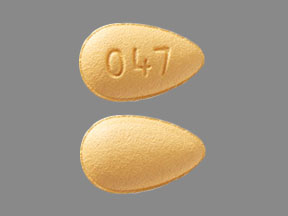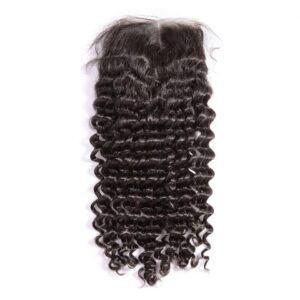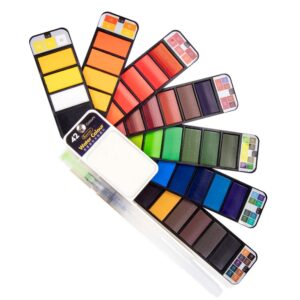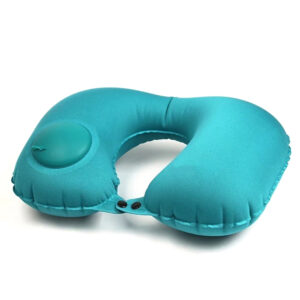Delivery Method: Via Email Product: Drugs Recipient:
Recipient Name
Anna Xavier
Kalani AB dba Kalani Sunwear
Brahegatan 28
114 37 Stockholm
Sweden
info@kalani.se Issuing Office: Center for Drug Evaluation and Research (CDER)
United States
WARNING LETTER
August 6, 2025
RE: 710998
Dear Ms. Xavier:
This letter is to advise you that on May 7th, 2025 the U.S. Food and Drug Administration (FDA) reviewed your product labeling, including your website, https://kalanisunwear.com/, where your “Kalani sunwear SUN MOUSSE SPF 50” drug product is available for purchase in the United States without a prescription. We also reviewed your social media pages on Instagram at “kalanisunwear,” which directs consumers to your website to purchase your product, and your Facebook at “Kalani.”
Your “Kalani sunwear SUN MOUSSE SPF 50” is a “drug” as defined by section 201(g)(1)(B) of the FD&C Act, 21 U.S.C. 321(g)(1)(B), because it is intended for use in the diagnosis, cure, mitigation, treatment, or prevention of disease, and/or under section 201(g)(1)(C) of the FD&C Act, 21 U.S.C. 321(g)(1)(C), because it is intended to affect the structure or any function of the body.
Examples from the “Kalani sunwear SUN MOUSSE SPF 50” product labeling, including your website and social media pages listed above, that provide evidence of the intended uses (as defined in 21 CFR 201.128) of the product as a drug include, but may not be limited to, the following:
“SUNSCREEN MOUSSE SPF 50… Sunscreen SPF 50… WARNINGS:… Reducing the quantity of sunscreen product applied will lower the level of protection significantly” [from the label of your product on your product website]
“Introducing our Kalani sunwear Sun Mousse SPF 50: your ultimate defence against the sun’s rays!” [from your product website]
“High Sun Protection (SPF 50). Experience top-tier protection against harmful UV rays, ensuring your skin stays safeguarded in the sunniest conditions…Wide Spectrum Protection. Guard your skin against UVA and UVB rays with our broad-spectrum formula, leaving no room for compromise.” [from your product website]
“Say goodbye to sunburns and hello to radiant, protected skin! Discover the ultimate sun mousse that feels as light as a cloud while giving you SPF 50 protection…” [from your Instagram social media page]
Based on the above labeling, your “Kalani sunwear SUN MOUSSE SPF 50” is intended for use as an over-the-counter (OTC) sunscreen drug product. No FDA-approved application pursuant to section 505 of the FD&C Act, 21 U.S.C. 355, is in effect for your drug product. Section 505G of the FD&C Act, 21 U.S.C. 355h, governs the marketing of nonprescription drugs that are marketed without an approved application under section 505 of the FD&C Act, 21 U.S.C. 355, such as your product. Under section 502(ee) of the FD&C Act, 21 U.S.C. 352(ee), a nonprescription drug is misbranded if the drug is subject to section 505G of the FD&C Act, but does not comply with the requirements for marketing under that section and is not the subject of an application approved under section 505 of the FD&C Act, 21 U.S.C. 355.
Section 505G of the FD&C Act, 21 U.S.C. 355h, provides that certain nonprescription drugs are deemed to be generally recognized as safe and effective (GRASE) and not new drugs if they, among other things, conform to the conditions in the applicable OTC monograph. In the case of OTC sunscreen drug products, the applicable OTC monograph is set forth in the final administrative order, OTC000006: Over-the-Counter Monograph M020: Sunscreen Drug Products for Over-the-Counter Human Use (hereinafter M020), which was deemed a final order by 505G(b)(8) and 505G(k)(2)(B).1 However, under section 505G(m)(2), “notwithstanding subsection [505G](a),” sunscreens in dosage forms other than oil, lotion, cream, gel, butter, paste, ointment, stick, spray, and powder may only be lawfully marketed, without an application approved under section 505 of the FD&C Act, pursuant to an order issued under section 505G of the FD&C Act.2 To date, no final order has been issued by the Secretary under 505G(b) or 505G(c) that would authorize marketing of sunscreen in a foam (aka mousse) dosage form,3. As previously stated, there is no FDA-approved application in effect for your drug product.
Thus, even if your product was in conformity with the conditions set forth in M020 and all other applicable requirements to be deemed GRASE and not a new drug under section 505G(a)(1), it does not comply with the requirements under section 505G. Accordingly, your “Kalani sunwear SUN MOUSSE SPF 50” is misbranded under section 502(ee) of the FD&C Act, 21 U.S.C. 352(ee).
The introduction or delivery for introduction of misbranded drugs into interstate commerce violates section 301(a) of the FD&C Act, 21 U.S.C. 331(a).
Additionally, the formulation for your “Kalani sunwear SUN MOUSSE SPF 50” does not comply with the conditions specified under M020. Specifically, to conform to the conditions of the monograph, your product must contain at least one of the active ingredients listed in § M020.10. Certain combinations of active ingredients are also permitted, as set out in § M020.20(a). We note that your “Kalani sunwear SUN MOUSSE SPF 50” label does not identify any of the ingredients as active ingredients; however, of your product’s labeled ingredients: “Aqua, Diethylamino Hydroxybenzoyl Hexyl Benzoate, Dibutyl Adipate, Phenethyl benzoate, C12-15 Alkyl Benzoate, Butane, Bis-Ethylhexyloxyphenol Methoxyphenyl Triazine, Trimethylpentanediol/Adipic Acid/Glycerin Crosspolymer, Propane, Ethylhexyl Triazone, Palmitic Acid, lsobutane, Stearic Acid, Silica, Phenoxyethyl Caprylate, Cetearyl Alcohol, Tocopheryl Acetate, Sorbitan Laurate, Polyglyceryl-4 Laurate/ Succinate, Triethanolamine, Tetrasodium Glutamate Diacetate” none are permitted active ingredients under M020 when used in combination or as sole ingredients.
Therefore, as formulated and labeled, “Kalani sunwear SUN MOUSSE SPF 50” does not comply with the applicable conditions specified in M020 and has not otherwise been found GRASE. Accordingly, “Kalani sunwear SUN MOUSSE SPF 50” is a new drug within the meaning of section 201(p) of the FD&C Act, 21 U.S.C. 321(p) and there is no basis under section 505G of the FD&C Act under which this product would be legally marketed without an approved application. Because there is no application in effect for this product, this product is an unapproved new drug. Introduction or delivery for introduction of such products into interstate commerce violates section 301(d) of the FD&C Act, 21 U.S.C. 331(d).
Conclusion
The violations cited in this letter are not intended to be an all-inclusive list of violations that may exist in connection with your products. You are responsible for investigating and determining the causes of any violations and for preventing their recurrence or the occurrence of other violations. It is your responsibility to ensure that your firm complies with all requirements of federal law, including FDA regulations.
This letter notifies you of our concerns and provides you an opportunity to address them. Failure to adequately address this matter may result in legal action including, without limitation, seizure, and injunction.
Please notify FDA in writing, within 15 working days of receipt of this letter, of the specific steps you have taken to correct any violations. Include an explanation of each step being taken to prevent the recurrence of violations, as well as copies of related documentation. If you believe that your products are not in violation of the FD&C Act, include your reasoning and any supporting information for our consideration. If you cannot complete corrective action within 15 working days, state the reason for the delay and the time within which you will complete the correction. Your response should be sent to U.S. Food and Drug Administration, CDER/OC/Office of Unapproved Drugs and Labeling Compliance by email to FDAAdvisory@fda.hhs.gov and include your firm name and the unique identifier “710998” in the subject line of your email.
Sincerely,
/S/
Tina Smith, M.S.
Captain, U.S. Public Health Service
Director
Office of Unapproved Drugs and Labeling Compliance
Office of Compliance
Center for Drug Evaluation and Research
U.S. Food and Drug Administration
_____________________________
1 See sections 505G(a)(1) and (2) of the FD&C Act and see Order ID OTC000006, available at FDA’s website OTC Monographs@FDA, https://dps.fda.gov/omuf. As required by section 505G(a)(2), M020 encompasses the requirements specified in part 352 of title 21, Code of Federal Regulations, as published on May 21, 1999, beginning on page 27687 of volume 64 of the Federal Register, except that the applicable requirements governing effectiveness and labeling shall be those specified in section 201.327 of title 21, Code of Federal Regulations.
2 Section 505G(m)(2) provides that “[n]otwithstanding subsection [505G](a),” a drug that, “prior to the date of the enactment of this section [March 27, 2020], the Secretary determined in a proposed or final rule to be ineligible for review under the OTC drug review” (emphasis added) may not be legally marketed without an approved NDA or ANDA except as “pursuant to an order issued under this section”. In a 2019 proposed rule, FDA determined that sunscreens in all dosage forms other than oil, lotion, cream, gel, butter, paste, ointment, stick, spray, and powder were ineligible for review under the OTC Drug Review under the then-operative requirements because we did not receive data showing that they were marketed prior to 1972. 84 FR 6204 at 6229-6230 (Feb. 26, 2019); see also 84 FR 6204 at 6206 and 6272. Therefore, under section 505G(m)(2) of the FD&C Act, a sunscreen in any dosage form other than the ten dosage forms listed above may only be marketed with an approved application, unless FDA determines otherwise in an order issued under section 505G of the FD&C Act. To date, no final order has been issued by the Secretary under 505G(b) or 505G(c) that would authorize marketing of sunscreen in a foam (aka) mousse dosage form.
3 The principal display panel of your product label, as well as other labeling, uses the term “mousse” to describe your product. “Foam” is the dosage form term in United States Pharmacopeia (USP) general chapter <1151>, Pharmaceutical Dosage Forms, that best corresponds to your product; “mousse” is not used in that reference.







